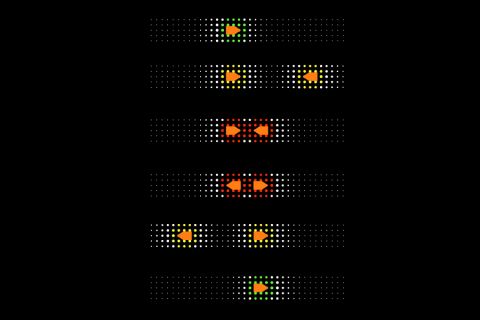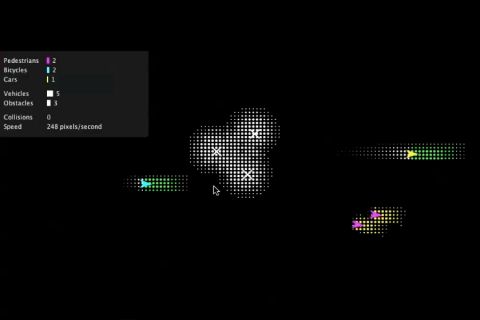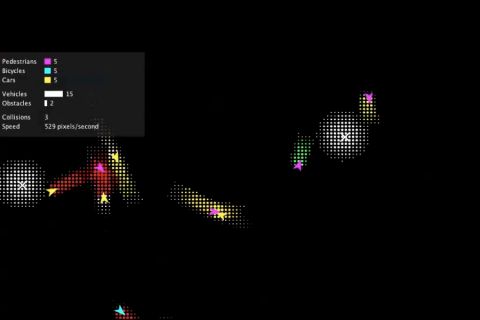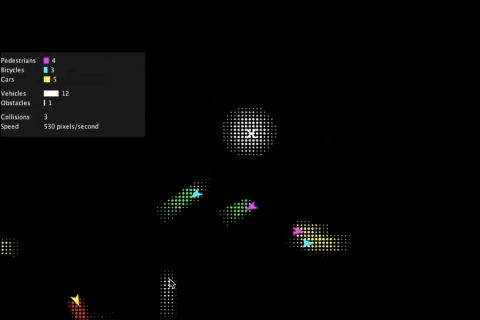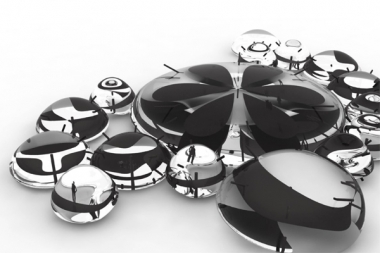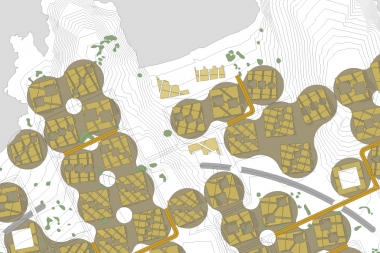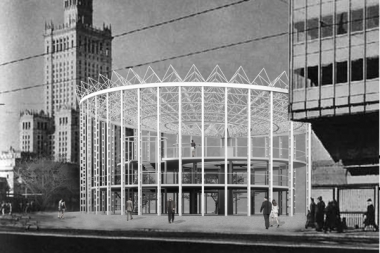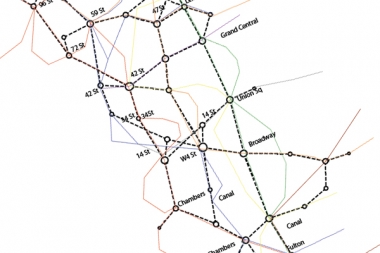- AURELVR
- DESIGN
- RESEARCH
- TEACHING
Brooklyn Smart Dots
With the advent of mechanical transportation came the necessity to mediate traffic flows based on the voluntary acceptance of rules and regulations by each traffic participant. Exceeding speed limits or disregarding traffic signals, for instance, could have deadly consequences. Because there was no immanent feedback mechanism, each traffic participant had to account for one's own possible failures and of those of the others and the system. The confidence in the traffic participant's ability to compensate system failure was a compromise in lack of a better technological solution. The set of rigid traffic rules stood in sharp contrast to the highly dynamic nature of traffic.
Smart dots aims to re-introduce swarm-intelligence into the shared space of pedestrian, mechanized and motorized traffic.
A field of Smart Dots registers vehicular and pedestrian motion, computes possible trajectories and collisions, projects traffic patterns, and communicates anticipatory solutions back to the participants in form of color coded visual information. Pedestrian and bikers will react to a bright visual signal, while automotive machines will be equipped with visual sensors. As a result traffic is visualized as a dynamic system and displayed as a forecast within the very space it is happening.
Implemented in a Java scripting language (Processing), vehicular classes and smart dots constantly update their states based on the dynamic information of the system. The system requires simple rules such as the avoidance of collision, maximum speed regulations, priority of right-over-left to escape chaos. Even if the system runs from random starting parameters, smart dots will asymptotically approach a harmonic traffic pattern, the optimized traffic solution. Based on the initial parameters of traffic participants and the constraining rules, the resulting traffic patterns exhibit striking symmetries similar to "Tone Figures" discovered by Ernst Florens Friedrich Chladni in 1802. Smart Dots can be constrained even further by casting the system onto existing street-scapes. In return, Smart Dot patterns are used compute emergent urban traffic design, leading to an emergent urban design.
Institution: aurel VRContributors: Aurel von Richthofenwith Lydia Kallipoliti, Mitchel Joachim,programming Kaustuv DebiswasProcessing implementationDesign Aurel von Richthofen, Programming Florian JennettYear: 2008 - 2010
